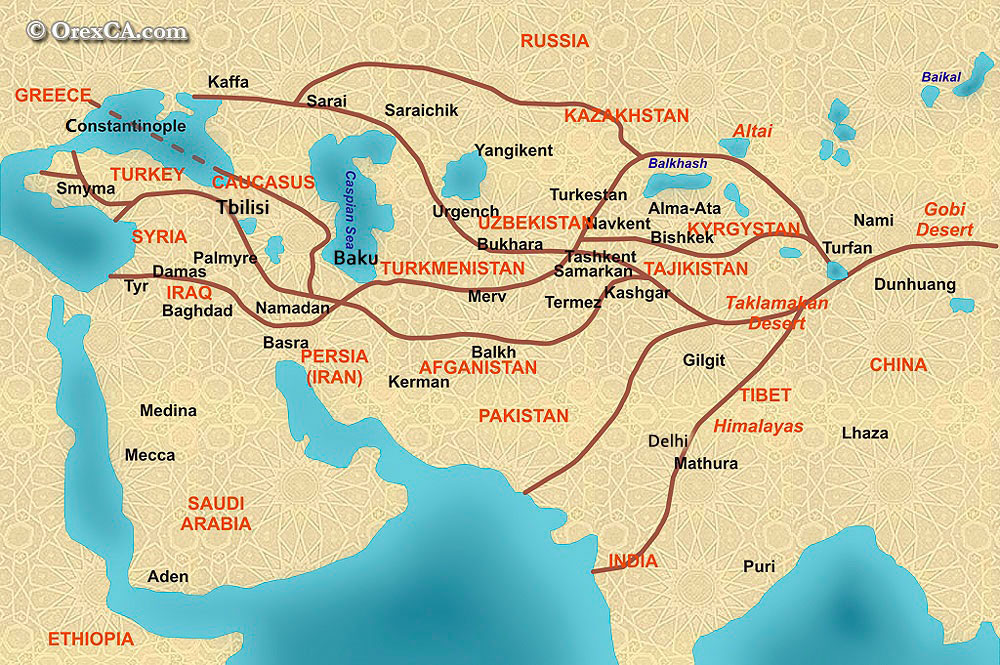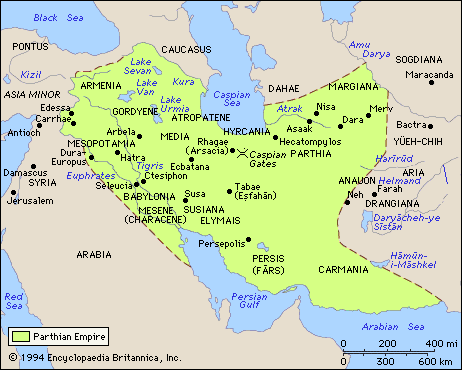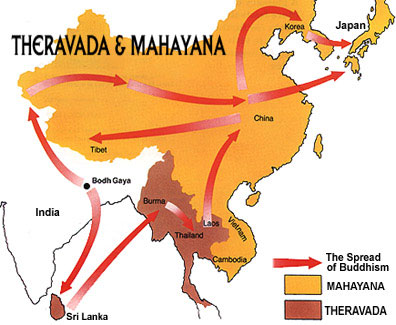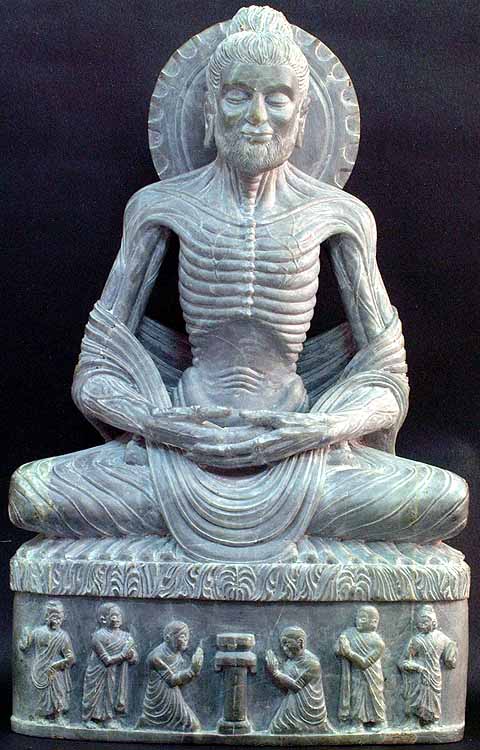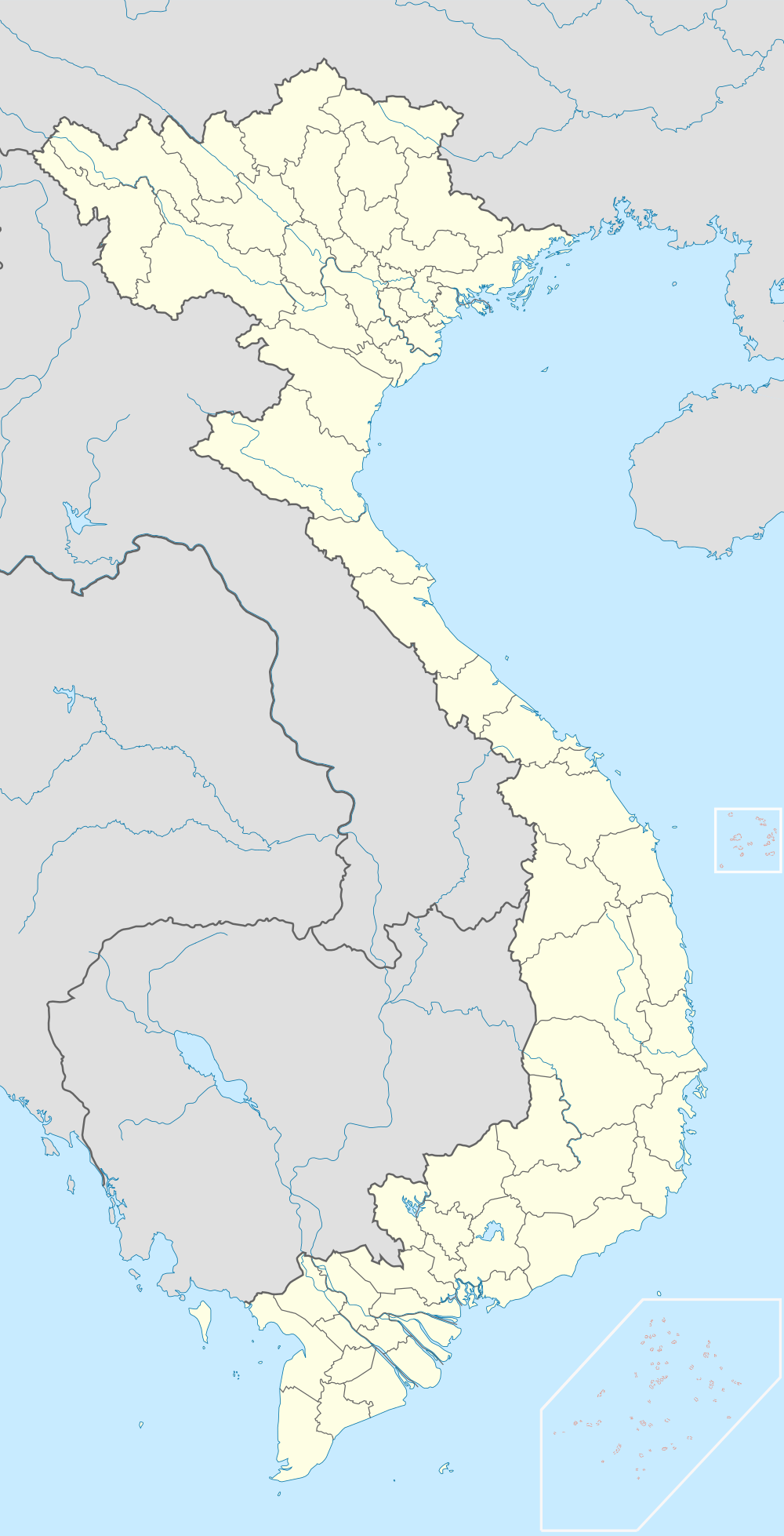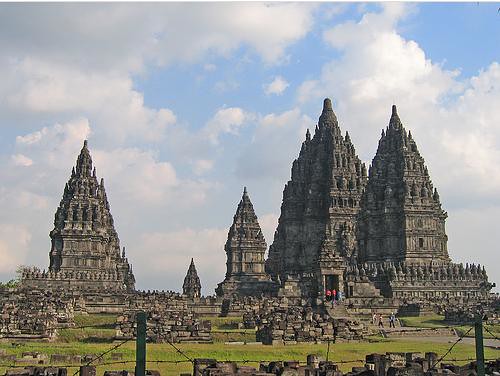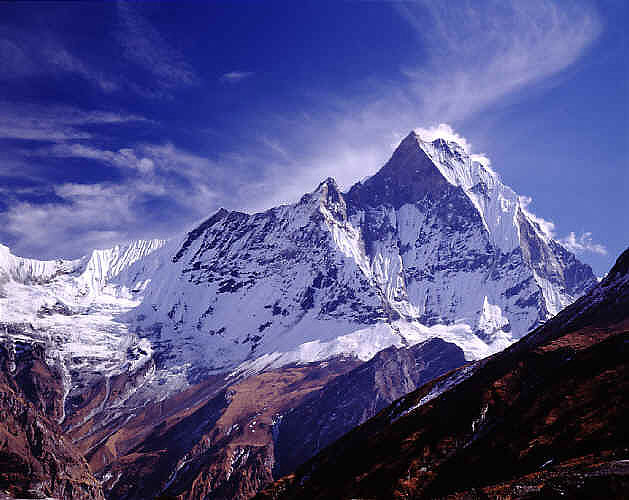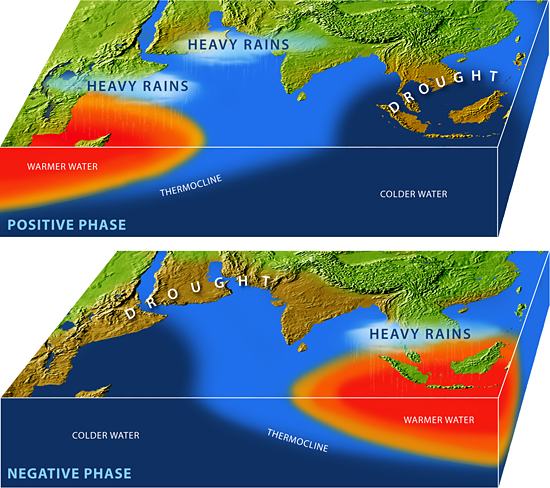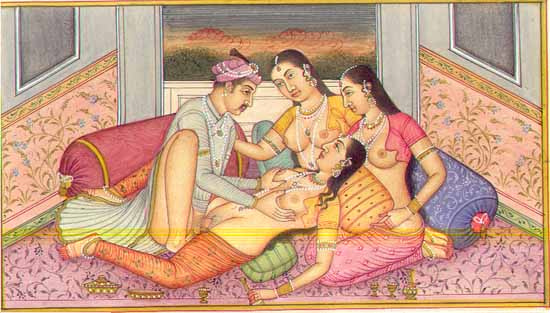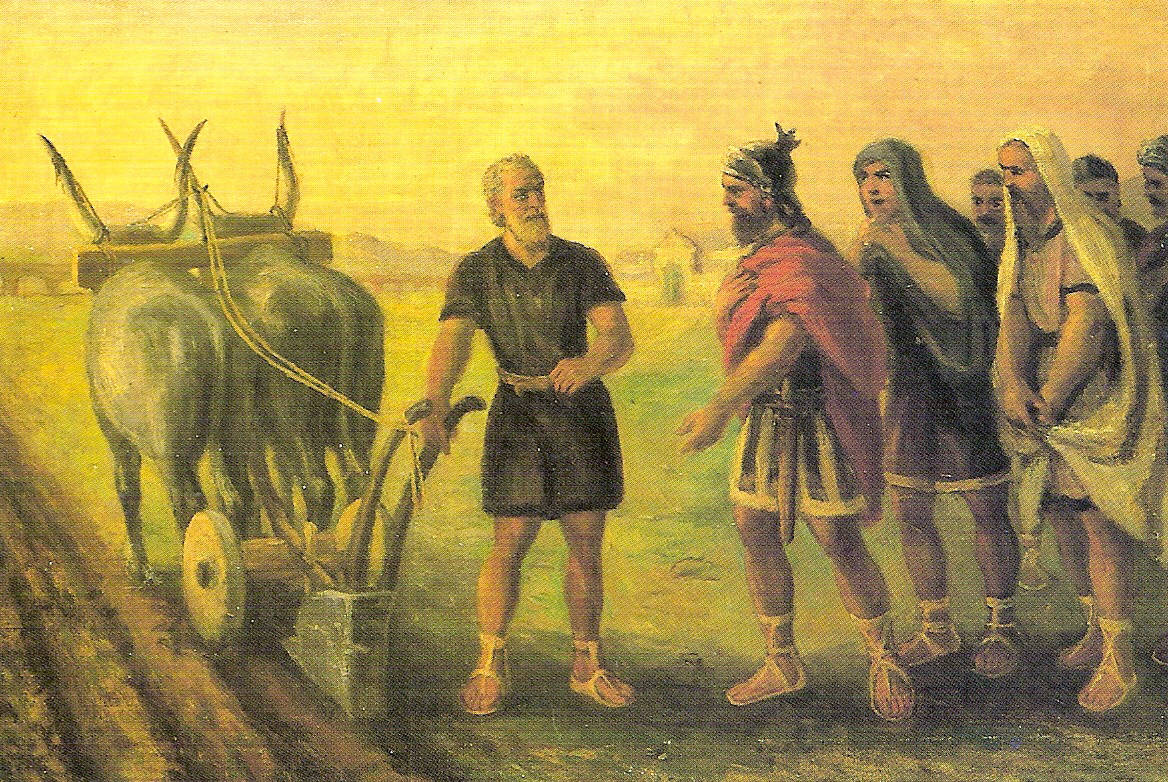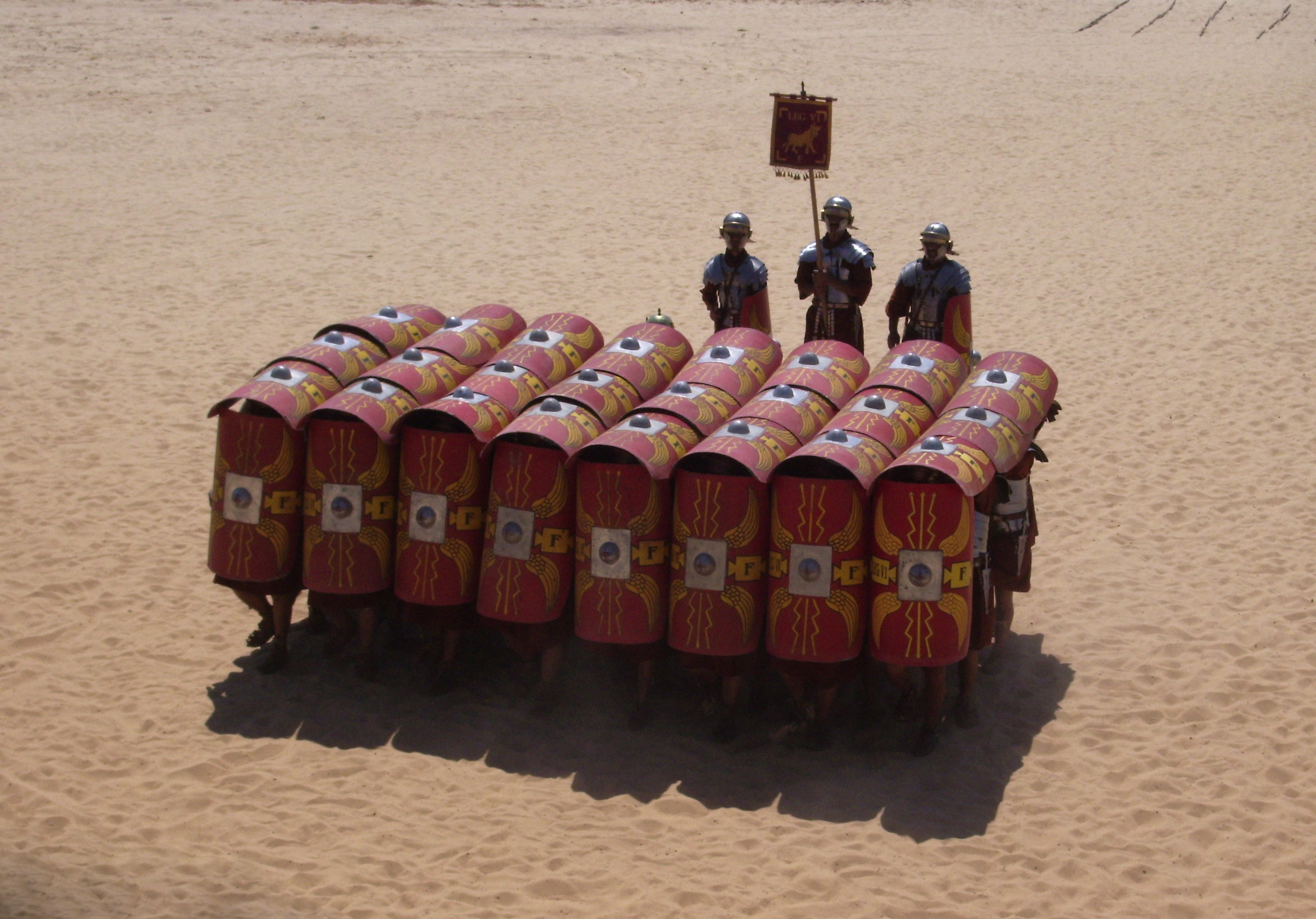I. The Silk Road
A. Origins and Operations
1. Parthians--because the Seleucid kings who succeeded Alexander the Great in the 3rd century BCE focused their energies in Mesopotamia and Syria, an Iranian nomadic leader was able to establish an independent kingdom in northern Iran. The Parthian Kingdom left little in the way of written documents, and constant warfare between themselves and the Greeks and the Romans meant we can gleen little from those source; what we have been able to uncover indicates that they helped forster the Silk Road by being the initial western terminus, and because they shared customs with the nomadic peoples farther east, who also helped establish this trade route.
2. Zhang Jian--travelled west in search of desirable trade goods (particularly horses), which he found with the nomadic people residing in the Valley of Ferghana, where he also encountered for the first time rivers that flowed to the west.
3. Nomadic peoples of the steppes--although little of the trade along the Silk Road was directed toward the local people of the steppes, that trade would not have occurred without their assistance and acquiesence.
4. Trade goods:
a. Silk from China
b. New plants to China--like pistachio, walnuts, pomegranates, sesame, spinach; non-food items like jasmine oil, oak galls, sal ammonia, copper oxides, zinc, and precious stones.
B. Nomadism in Central and Inner Asia--the Silk Road could not function without the guidance these nomadic people provided, along with the animals and animal handlers to transport the trade goods.
1. Scythians--appear in the writings of the Greek historian Herodotus in the 6th century BCE. Extremely proficient on horseback, they moved regularly and effiencently with their huge hers of livestock.
2. Self-sufficiency--because of their mobility, nomads liked to make sure their food source was mobile, as well. Although they ate and used products grown by farmers, they remained nomadic to ensure that their herds did not overgraze.
3. Dependency--nomads were dependent upon settled regions to provide bronze metal and iron, which they then reshaped to use in stirrups, bridles, cart fittings, and weapons.
C. Impact of the Silk Road
1. Iranian speakers--as trade became more important in Central Asia, the Iranian speakers largley moved to trading cities and surrounding farm villages, and were replaced on the steppes by peoples speaking unrelated Turkic languages.
2. Military technology--radiated outward from the nomadic people, who invented technology like the stirrup and the chariot.
II. The Indian Ocean Maritime System
A. Ship Design--ships used in the Indian Ocean differed from those sailing in the west. Whereas ships in the Mediterranean used square sails and oarsmen, Indian Ocean vessels use triangular sails without oarsmen.
1. Greater distances--for merchants and sailors in the Indian Ocean meant that the trade that took place there was fundamentally different than that in the Mediterranean; whereas Greece and Rome established colonies under their direct poltical control, trading colonies in the Indian Ocean were generally ruled by local princes.
B. Origins of Contact and Trade
1. Earliest Records--from around 2000BCE Sumerian records indicate regular trade between Mesopotamia, the islands in the Persian Gulf, Oman, and the Indus Valley. This trade broke off, eventually, and later trade references mention East Africa more often than India.
2. Madagascar--about 2000 years ago, sailors from Southeast Asia crossed the Indian Ocean, eventually settling on the island of Madagascar. They brought with them some of their native foods, like bananas, yams, and other crops native to Southeast Asia, which were promptly introduced to mainland Africa, as well.
B. Impact of Indian Ocean Trade
1. Demand for trade goods
a. East Africa--provided exotic animals, wood, and ivory (irvory was also proved other regions bordering the Indian Ocean, so it is difficult in determining what ivory came from where)
b. Somalia and southern Arabia--grew scrubby trees whose aromatic resin was valued as frankincense and myrrh.
c. The Persian Gult abounded with pearls
d. Oman provide a source of copper
e. India and Southeast Asia--provided spices; Southeast Asia was also a conduit for manufactured items--particularly pottery--from China.
2. Small hinterlands--trade in the Indian Ocean basin was hindered by the small hinterlands of Indian Ocean ports, particularly those ports to the west. This meant they had less access to items to trade with, and also meant the trade volume was less.
3. Greater distances--whereas the Mediterranean was relatively compact, the great distance between ports in the Indian Ocean meant more time travelling, and less time trading.
III. Routes Across the Sahara
A. Early Saharan Cultures
1. Climate change--the Sarhara Desert is the result of significant climate change; before its formation (a gradual process0, people lived in the area it now occupies. As change occurred gradually, people learned to adampt or, mostly, moved on to more hospitable environments.
2. Rock paintings--much of what we know about early life in the Sahara comes from interpreting rock paintings left in the desert, which depict scenes of life there that are remarkably similar to life in the northern reaches of sub-Saharan Africa today--like pastoral cattle raising.
a. Cattle breeders were succeeded by horse breeders, who used the horsed to pull chariots. We are uncertain exactly where these horse breeders came from, although the hypothesis that they were refugees from Mycenean and Minoan civilizations seems highly unlikely.
b. Domestication of the Camel--probably inaugurated trans-Saharan trade, because humans then had a means of reliable transportation across the forbidding landscape.
B. Trade Across the Sahara
1. Southern traders--traders in the southern region of the Sahara utilized the salt deposits there to trade for goods with sub-Saharan peoples, particularly forest products like kola nuts and palm oil.
2. Sahel people--the southern borderlands of the Sahara was populated with farmers who traded grain to both Saharan merchants and the sub-Saharan peoples.
3. Roman colonists--provided Italy with agricultural products, primarily wheat and olives. This pattern changed in the 3rd century CE, with the decline of the western half of the Roman Empire.
IV. Sub-Saharan Africa
A. Challenging Geography--the Sahara, the Atlantic and Indian Oceans, and the Red Sea form the boundaries of the region, and worked to isolate it from from contact with other regions
1. 4000 Miles--the distance from the southern edge of the Sahara to the Cape of Good Hope. A traveler would have to cover over 50 degrees of latitude, and travel through the flat, arid steppes of the Sahel regions, to the tropical savanna, through the tropical rainforest, then through another expanse of savana, followed by more steppe and desert, and then finally a region of temperate highlands at the southern tip--and as far south of the equator as Greece and Sicily are north.
B. Development of Cultural Unity--the geographic isolation enjoyed by sub-Saharan Africa worked more in favor of fostering cultural diversity than cultural unity; there are more than 2000 languages spoken throughout the region.
1. Geographic diversity--fostered diverse food production systems, from hunting and gathering (in diverse locations, from tropical jungle to teh Khosian people of the southwestern deserts, to the cultivation of bananas and yams to sorghum and other grains).
2. Sub-Saharan African covered a larger and more diverse area than any other cultural region in the first millenium CE, and had a lower overall population density. Societies and polities therefore had ample room to form and reform, and ample space separated such groups--therefore, there was not the conflict that fostered cultural succession in much of the rest of the world.
3. Isolation--the geographic barriers also prevented most outside contact, and meant that they were isolated from contact with aggressive cultures like the Greeks and the Romans--but also isolated from their techonology.
C. African Cultural Characteristics--despite all these factors promoting cultural diversity, there were cultural similarities, as well.
1. Agricultural techniques--use of the digging stick and hoe
2. Rhythmic nature of African music--and the use of the drum. Music played an important role in social rituals, and did dancing and the wearing of masks.
3. Ritual isolation of kings and fixed social categories--age groups, kinship divisions, distinct gender roles and relations, and occupational groupings--all showed a resemblence from one region to another, even in societies too small to have a king.
D. Advent of Iron and the Bantu Migration
1. Early metal working--many historians have argued that the discovery of the secrets of ironworking happened only once in the history of mankind--in Anatolia--and from there spread around the world. The fact that sub-Saharan Africans were working with iron, despite their isolation, shortly after its discovery calls this assumption into question.
2. Importance of the Bantu--more than 300 languages in sub-Saharan Africa have Bantu as their root. The original home of the Bantu, near the present-day border between Nigerian and Cameroon, is also the location of the beginning of iron-making in Africa--and the migration of Bantu speakers also spread the manufacture of iron throughout Africa.
V. Spread of Ideas
A. Ideas and Material Evidence
1. Eating pork--early pig domestication began in Southeast Asia. Anthropological studies have indicated that eating pork became highly ritualistic, and sometimes was only permitted during ceremonial occassions.
a. Probably because wild pigs lived in swamps, they became associated with eveil gods (like Set, in Egypt), and were therefore thought not desirable--or even dangerous--to eat.
B. The Spread of Buddhism
1. Royal promotion--promotion by Mauryan emperor Ashoka and the Kushan king Kanishka, followed by proselytizing by Buddhist monks, missionaries, and pilgrims who crisscrossed India, followed the Silk Road, or took ships across the Indian Ocean, brought the Buddha's teaching to China, Korea, Southeast Asia, and Japan.
2. Flexibility to change according to local conditions--different lands that received the story and teachings of the Buddha preserved or adapted them in different ways.
a. Theravada Buddhism--became popular in Sri Lanka, ans was centered closely on the Buddha's earliest teaching--that the goal was to achieve Nirvana, and that it was only available to monks.
b. Mahajana Buddhism--popular in East Asia, and stressed the goal of becoming a bodhisattva, and therefore helping others achieve Nirvana.
VI. Conclusion
Thursday, October 28, 2010
Thursday, October 21, 2010
Religion and Trade in Southeast Asia
I. Threats to Vedic Hegemony
A. Jainism
1. Mahavira (540-468BCE)--known to his followers as Jina (the Conqueror), so these followers were known as Jianists, and the religion as Jianism.
2. Emphasized the holiness of the life force animating all living creatures, Mahavira and his followers practiced strict non-violence--including wearing masks so as not to accidently breath in insects, and they carefully brushed off seats before sitting down, so as not to inadvertently sit on a living creature.
3. Extreme asceticism--some followers went so far as to refuse to wear clothing (so they wouldn't have to kill plants to obtain fiber to make clothe), and ate only what others gave them--so many ended up starving to death.
a. While this seems extreme to us today--and it is--it should be noted that some early Christians chose to live as hermits--in a desert, with no clothing, only eating what they could find.
B. Buddhism--Buddha, "the enlightened one"
1. Siddhartha Gautama--born into a royal family of the Sakyan people, in the foothills of the Himalayas. Despite being born into wealth, as a young man Siddhartha abandoned his family and privileges to become an wondering ascetic
2. The Middle Path--after six years of wandering and self-deprivation, Siddhartha decided that his new lifestyle would no more lead to spiritual enlightenment than his old lifestyle of idle leisure did. Instead, his moment of enlightenment led him to seek the Middle Path.
3. Siddhartha's Enlightenment--led him to discover the Four Noble Truths--
a. Life is suffering
b. Suffering arises from desire
c. The solution to alleviating suffering lies in curbing desire
d. Desire can be curbed if a person follows the "Eighfold Path":
i. Right views
ii. Aspirations
iii. Speech
iv. Conduct
v. Livelihood
vi. Effort
vii. Mindfulness
viii. Meditation
4. Buddha's First Sermon--introduced the Wheel of the Laws, which set forth the central tenets of his philosophy.
5. Central tenets of Buddhism--focused on the individual, dismissed the usefulness of deities to a person seeking enlightenment. What mattered was practicing moderation, in order to minimize desire and therefore suffering, as well as practicing meditation and self-discipline to search for spiritual truth.
6. Nirvana--"snuffing out the flame" released one from the cycle of reincarnations, and the achievement of a state of perpetual tranquility.
7. Buddha's death--Buddha urged his followers to "be their own lamp." His teachings, memorized by his followers, spread throughout India and into Central, Southeast, and East Asia--and its success began to subvert the individualistic and essentially atheistic tenets of its founder.
a. Stupas--large earthen mounds symbolizing the universe were built over relics of the cremated founder to allow worshipers to have a connection with Buddha (like relics of the cross for Christians)
b. Bodhisattvas--men and women who had achieved enlightenment and were on the threshold of nirvana, but chose to remain among the living to assist others; this eventually developed into practices like the Dalai Lama.
8. Difficulty of the individualistic path--Hinduism won out in India because it used element of Buddhism, but also incorporated gods that people could connect to , and feel they could present their personal trouble to for resolution.
II. Southeast Asia, 50-1025CE
A. Three geographic zones
1. Indochina mainland--includes the present-day countries of Vietnam, Cambodia, Thailand, and Myanmar (Burma).
2.Malay Peninsula--Malaysia, Singapore
3. Pacific Islands--Indonesia, Philippines, Brunei
B. Agriculture--reliable rainfall because of the monsoon, coupled with consistently warm temperatures, allows Southeast Asia several growing season each year, and allows the region to support a large population. Because much of the region also sits on top of active volcanoes, they soil is high in carbon and very fertile.
1. Swidden agriculture--commonly known as "slash and burn" agriculture. The land was farmed until it was exhausted, then farmers abandoned it and let the jungle reclaim and refurbish the soil.
2. Rice--was the staple crop, but other crops were introduced to the region from other regions in Asia, including soybeans, sugar cane, yams, bananas, and coconuts, as well as domesticated animals like chickens and pigs.
C. Peopling Southeast Asia
1. Malay peoples--became the dominant population in this region and were the result of several waves of migration from southern China from around 3000BCE.
a. Some of the indigenous peoples merged with the Malays; others retreated to the mountain and forest zones. Subsequently, rising populations and disputes within communities led to streams of people leaving the mainland for the islands.
2. Navigational skills--by 1000BCE, these people had developed an awareness of the regularity of the monsoon winds, as well as the ability to use other signs, to navigate the surrounding waters--and to eventually populate islands from the Indian Ocean to the Pacific--half the circumference of the globe.
3. Northern Indochina--its proximity to China made the people living there vulnerable to Chinese pressure, and to Chines culture.
III. Trade in the Indian Ocean Maritime System
A. Origins of Contact and Trade--Sumerian records indicate trade between Mesopotamia and the Persian Gulf, Oman, and the Indus Valley. This early trade broke down, however.
1. Southern Indochina--sailors from southern Indochina sailed as far west as Mozambique, and brought with them bananas, yams, and other Southeast Asian plants.
B. Indian Ocean Ports--were often isolate from hinterlands by geographic barriers, particularly in the west (the Arabian Peninsula, the African side of the Red Sea, southern Iran, and Northern India--present-day Pakistan--were mostly barren desert.
1. Western India--has steep mountains that cut off most of the central plain from the western seacoast
2. Eastern India--was more hospitable, with denser populations. This drew traders from Southeast Asia, who brought spices and other trade goods to exchange. This in turn led Indian traders to set up shop in Southeast Asia, to both trade goods locally, and to facilitate trade with Chinese merchants.
3. Role of women--because sailors and traders were exclusively male, native females acted as cultural ciphers, and created a multi-cultural, cosmopolitan population in the Indian Ocean ports--which helped to facilitate trade.
C. Funan--the first major Southeast Asian political center was called Funan by Chinese visitors, and flourished between the first and sixth centuries C.E. Funan was centered in the Mekong Delta, in present-day southernmost Vietnam.
1. The Funan capital was located in the delta, on the southwest coast of present day Vietnam. The Mekong Delta was a "rice bowl"--meaning that is could sustain a large population because of the fertility of the soil and the growing conditions for rice.
2. The Rulers of Funan mobilized large numbers of these people to work digging irrigation channels and to prevent destructive floods. This in turn allowed them to extend control over much of southern Indochina and the Malay Peninsula.
3. Trade Routes--the early trade route between China and India was partially overland--across the Malay Peninsula--which gave the Funan rulers a great deal of control over this trade. The route was partially over land because sailing around the islands near the Malay Peninsula was dangerous, with shallow waters, shoals, and pirates.
4. Downfall of Funan--occurred in the 6th century CE, probably due to the switch to an entirely water-borne route as navigation skills improved.
D. Srivijayan Kingdom--rose during the 6th century CE, with the shift in trade route between China and India.
1. Location--the kingdom was centered at the site of the modern-day city Sumatran city of Palembang, fifty miles up the navigable Musi River. The kingdom was well-situated to control the southern part of the Malay Peninsula, Sumatra, parts of Java and Borneo, and most importantly the Straits of Malacca and Sunda--where shipping was most vulnerable on this new route.
2. Srivijayan control zones--Srivijayan rulers controlled fours disctinct ecological zones
a. Agricultural plain along the Musi River, which provided the food for the work force in the core area of the kingdom, and therefore allowed them to extend control outward.
b. Upland regions of the Sumatra interior, which was a source for commercially valuable forest products (exotic wood, in particular)
c. River ports of what had been Srivijayan rivals, which were conquered initially, and then made allies by incorporating the pirates that worked from these ports to become the Srivijan navy, in turn for a cut of the profits--and the protection the Srivijan kings could offer.
d. The "rice bowl" on the central plain of Java--a region so productive that it still houses and feeds a majority of the population of present-day Indonesia today.
3. The Theater State--like the Gupta Kingdom, the Srivijayan kings relied upon pomp, circumstance, and religious ceremony to carry off their period of rule. It was successful until trade routes again shifted--and Palembang was invaded and sacked by the Chola kingdom from southeast India in 1025CE.
Tuesday, October 19, 2010
Foundations of Indian Civilization, 1500BCE-300CE
I. Indian Subcontinent
A. Definition--a subcontinent can be defined as a large land mass isolated by geological features from the continent it is part of.
B. Geography of the Indian Subcontinent
1. Mountainous northern zone--the Himalayas and the Hindu Kush ranges to the north, which also includes heavily forested foothills and high meadows.
2. River Basins--northern India is drained by two large, silt-laden rivers: the Indus, which flows southwesterly, and the Ganges, which flows southeasterly.
3. Monsoon--the northern mountains shield India from cold Artic winds, and fives it a sub-tropical climate. This makes the land mass much warmer than the ocean that surrounds it, prompting the development of the monsoons.
a. Sailors in the Arabian Sea and the Indian Ocean quickly learned how to use the monsoon wind to their advantage.
C. The Vedic Age--historians call the period between 1500-500BCE the Vedic Age, after the Vedas people that serve as our main source of information about this period. Most historians believe that a new group of people, animal herding warriors who spoke an Indo-European language, emigrated to northwest India around 1500BCE, although some historians argue that this migration occurred much earlier.
1. Migration to the Ganges Plain--around 1000BCE, after the fall of the Indus civilization, some groups moved further east, along the banks of the Ganges River. They brought with them new iron tools, which allowed them to cut down trees and till the thick, fertile soil.
2. Varna--the invaders moved into the Indian subcontinent from central Asia were much lighter-skinned than the native people they were living amongst, the Dasa. Because these invaders, the Arya, were much more aggressive, they pushed many of the Dasa further south. The elites among the two groups intermarried to some extent, but the lower class were exclusively Dasa. The result was a mixture of different peoples of different skin hues, and with that grew an attempt by the lighter-skinned invaders to mark these differences in appearance into social differences.
a. Brahmins--priests and scholars
b. Kshatriya--warriors and royal officials
c. Vaishya--merchants, artisans, and landowners
d. Shudra--peasants and laborers
e. Dalit--or "untouchables," mainly native peoples who were relegated to those task seen as ritually "unclean"--butchering animals, leather working, removing waste
Members of each jati had very little contact with members of other castes; to do so ran the risk of becoming unclean, which necessitated purification rituals.
3. Karma--the class and caste system came to be connected to the widespread belief in reincarnation.
a. Reincarnation--the Brahmins taught that every living creature had an immortal essence, call atman (or breath). The atman became separated from the body at death, and then was later reborn in another body. Whether that body was human, animal, or insect depended upon the kind of life that had been led. People who led exemplary lives could then be reincarnated into a higher caste.
II. Imperial Expansion and Collapse, 324BCE-650CE
India has been characterized by political fragmentation for most of its history, largely due to its size, geographic barriers, language variation, and cultural practices
A. Mauryan Empire, 324-184BCE
1. Magadha Kingdom--located in eastern India south of the Ganges. The Magadha kingdom became increasingly wealthy by 600BCE, due to its location along overland trade routes, in addition to its wealth in agriculture and iron mines.
2. Chandragupta Maurya--may have been inspired by the example of Alexander the Great, who had recently invaded India as far east as the Punjab.
3. Chandragupta Maurya and his two successors managed to extend their control over much of the subcontinent, except for the southernmost tip.
4. The tax equivalent of about 25 percent of the yearly harvest supported the empire; this tax income was supplemented by excise taxes collected on trade goods passing through the empire. Income was also derived from the monopolization of alcohol sales, the manufacture of weapons, and fees charged for using irrigation systems that were built.
5. Reliance upon relatives to govern the far-flung empire
6. Ashoka--grandson of Chandragupta; at the beginning of his reign he engaged in military campaigns to extend his empire that resulted in thousands of people being killed. In a battle to conquer Kalinga, hundreds of thousands of people were killed, wounded, or deported. Overwhelmed by the brutality, the young king became a convert to Buddhism.
B. Commerce and Culture in an Era of Political Fragmentation
1. Fall of the Mauryan Empire--although the empire prospered for several years after Ashoka's death in 232BCE, dynastic disputes, the cost of maintaining a huge army, and the administrative costs in running the empire all contributed to its fall.
2. Politic unrest outside the borders of the empire contributed to its downfall, as well; eventually several of the foreign powers exercised some political control over the region.
3. Cities established during the Mauryan era continued to carry on a lively trade, and India remained an important cog in the trade that occurred between China, Southeast Asia, Central Asia, the Middle East, Eastern Africa, and the Mediterranean. This trade fostered the use of coins, for which a value was easier to establish
4. Guilds--with the decrease in central authority, guilds of merchants and artisans became politically powerful in the cities and town
5. Epic poetry--both the Ramayana and the Mahabharata, based upon oral traditions going back hundreds of years, achieved their written forms during this era.
6. The Tamil Kingdoms--the southern tip of the subcontinent remained in the control of the Tamil peoples. Although three of the Kingdoms--the Cholas, the Pandyas, and the Cheras-- were in near-constant conflict with one another, and each experienced periods of ascendancy and decline, this was the also the era of the flowering of Tamil culture.
C. The Gupta Empire, 320-550CE
1. Chandra Gupta--consciously modeled himself on Chandragupta Maurya, and led his kingdom from its capital Pataliputra on the Ganges Plain. The Gupta Empire was never as large as the Mauryan Empire, but Gupta power extended across northern and central India, west to Punjab and east to Bengal, north to Kashmir, and south into the Deccan Plateau.
2. Trade routes--like the Mauryan predecessor, the Guptas enjoyed the same strategic advantages, sitting astride the same trade routes, exploiting the same agricultural productivity of the Ganges Plain, and controlling iron deposits..
3. Administrative bureaucracy--less onerous than the Mauryan. The administrative bureaucracy was smaller and less intensive, as was its spy network. The standing army relied on marksmanship with bow and arrow and skill on horseback (learned from their nomadic conquerors), rather than superior numbers. This allowed the Gupta's to closely control the core of the empire, while relying on governors paying tribute to control the periphery.
4. The "Theater State"--without a large standing army to keep underlings and vassals in line, the Gupta relied instead on pomp and circumstance--solemn ceremonies, rituals, and cultural events that advertised the benefits of association with the empire. And gifts. Lost of gifts.
5. The role of women--during the Gupta era, women lost rights, and males increased their control of the lives of the women in their families.
a. Kama Sutra--sold in bookstores today an kind of an exotic sex manual, it was more a directory to the proper way men and women should behave with one another in Indian society.
b. Great emphasis on the "purity" of women, ensuring women were "maidens" (virgins) before they were married. This eventually led to women becoming betrothed at extremely young ages--some as early as six or seven years of age--to ensure their virginity.
c. Sati--the ritual where wives who outlived their husbands were expected to cremate themselves on their husbands' funeral pyre; women who failed to do this were ostracized, cut off from their families, and disinherited.
d. Women of higher social status could sometimes escape this fate, as could women who joined religious communities.
6. Rise of Hinduism--the Gupta's were Hindu (whereas the Maruyan's had been Buddhist) and revived ancient Vedic practices that gave their ceremonies an aura of sanctity. They incorporated Brahmin priests into these ceremonies and validated the role of the priests--who in turn used their influence to validate the Gupta's rule ) and were rewarded with substantial land grants, etc.).
7. Fall of the Gupta--pressure from Hun raids on the Gupta northern frontier, and the expense of attempting to defend it, exhausted the Gupta treasury, and led to the downfall of the empire.
A. Definition--a subcontinent can be defined as a large land mass isolated by geological features from the continent it is part of.
B. Geography of the Indian Subcontinent
1. Mountainous northern zone--the Himalayas and the Hindu Kush ranges to the north, which also includes heavily forested foothills and high meadows.
2. River Basins--northern India is drained by two large, silt-laden rivers: the Indus, which flows southwesterly, and the Ganges, which flows southeasterly.
3. Monsoon--the northern mountains shield India from cold Artic winds, and fives it a sub-tropical climate. This makes the land mass much warmer than the ocean that surrounds it, prompting the development of the monsoons.
a. Sailors in the Arabian Sea and the Indian Ocean quickly learned how to use the monsoon wind to their advantage.
C. The Vedic Age--historians call the period between 1500-500BCE the Vedic Age, after the Vedas people that serve as our main source of information about this period. Most historians believe that a new group of people, animal herding warriors who spoke an Indo-European language, emigrated to northwest India around 1500BCE, although some historians argue that this migration occurred much earlier.
1. Migration to the Ganges Plain--around 1000BCE, after the fall of the Indus civilization, some groups moved further east, along the banks of the Ganges River. They brought with them new iron tools, which allowed them to cut down trees and till the thick, fertile soil.
2. Varna--the invaders moved into the Indian subcontinent from central Asia were much lighter-skinned than the native people they were living amongst, the Dasa. Because these invaders, the Arya, were much more aggressive, they pushed many of the Dasa further south. The elites among the two groups intermarried to some extent, but the lower class were exclusively Dasa. The result was a mixture of different peoples of different skin hues, and with that grew an attempt by the lighter-skinned invaders to mark these differences in appearance into social differences.
a. Brahmins--priests and scholars
b. Kshatriya--warriors and royal officials
c. Vaishya--merchants, artisans, and landowners
d. Shudra--peasants and laborers
e. Dalit--or "untouchables," mainly native peoples who were relegated to those task seen as ritually "unclean"--butchering animals, leather working, removing waste
Members of each jati had very little contact with members of other castes; to do so ran the risk of becoming unclean, which necessitated purification rituals.
3. Karma--the class and caste system came to be connected to the widespread belief in reincarnation.
a. Reincarnation--the Brahmins taught that every living creature had an immortal essence, call atman (or breath). The atman became separated from the body at death, and then was later reborn in another body. Whether that body was human, animal, or insect depended upon the kind of life that had been led. People who led exemplary lives could then be reincarnated into a higher caste.
II. Imperial Expansion and Collapse, 324BCE-650CE
India has been characterized by political fragmentation for most of its history, largely due to its size, geographic barriers, language variation, and cultural practices
A. Mauryan Empire, 324-184BCE
1. Magadha Kingdom--located in eastern India south of the Ganges. The Magadha kingdom became increasingly wealthy by 600BCE, due to its location along overland trade routes, in addition to its wealth in agriculture and iron mines.
2. Chandragupta Maurya--may have been inspired by the example of Alexander the Great, who had recently invaded India as far east as the Punjab.
3. Chandragupta Maurya and his two successors managed to extend their control over much of the subcontinent, except for the southernmost tip.
4. The tax equivalent of about 25 percent of the yearly harvest supported the empire; this tax income was supplemented by excise taxes collected on trade goods passing through the empire. Income was also derived from the monopolization of alcohol sales, the manufacture of weapons, and fees charged for using irrigation systems that were built.
5. Reliance upon relatives to govern the far-flung empire
6. Ashoka--grandson of Chandragupta; at the beginning of his reign he engaged in military campaigns to extend his empire that resulted in thousands of people being killed. In a battle to conquer Kalinga, hundreds of thousands of people were killed, wounded, or deported. Overwhelmed by the brutality, the young king became a convert to Buddhism.
B. Commerce and Culture in an Era of Political Fragmentation
1. Fall of the Mauryan Empire--although the empire prospered for several years after Ashoka's death in 232BCE, dynastic disputes, the cost of maintaining a huge army, and the administrative costs in running the empire all contributed to its fall.
2. Politic unrest outside the borders of the empire contributed to its downfall, as well; eventually several of the foreign powers exercised some political control over the region.
3. Cities established during the Mauryan era continued to carry on a lively trade, and India remained an important cog in the trade that occurred between China, Southeast Asia, Central Asia, the Middle East, Eastern Africa, and the Mediterranean. This trade fostered the use of coins, for which a value was easier to establish
4. Guilds--with the decrease in central authority, guilds of merchants and artisans became politically powerful in the cities and town
5. Epic poetry--both the Ramayana and the Mahabharata, based upon oral traditions going back hundreds of years, achieved their written forms during this era.
6. The Tamil Kingdoms--the southern tip of the subcontinent remained in the control of the Tamil peoples. Although three of the Kingdoms--the Cholas, the Pandyas, and the Cheras-- were in near-constant conflict with one another, and each experienced periods of ascendancy and decline, this was the also the era of the flowering of Tamil culture.
C. The Gupta Empire, 320-550CE
1. Chandra Gupta--consciously modeled himself on Chandragupta Maurya, and led his kingdom from its capital Pataliputra on the Ganges Plain. The Gupta Empire was never as large as the Mauryan Empire, but Gupta power extended across northern and central India, west to Punjab and east to Bengal, north to Kashmir, and south into the Deccan Plateau.
2. Trade routes--like the Mauryan predecessor, the Guptas enjoyed the same strategic advantages, sitting astride the same trade routes, exploiting the same agricultural productivity of the Ganges Plain, and controlling iron deposits..
3. Administrative bureaucracy--less onerous than the Mauryan. The administrative bureaucracy was smaller and less intensive, as was its spy network. The standing army relied on marksmanship with bow and arrow and skill on horseback (learned from their nomadic conquerors), rather than superior numbers. This allowed the Gupta's to closely control the core of the empire, while relying on governors paying tribute to control the periphery.
4. The "Theater State"--without a large standing army to keep underlings and vassals in line, the Gupta relied instead on pomp and circumstance--solemn ceremonies, rituals, and cultural events that advertised the benefits of association with the empire. And gifts. Lost of gifts.
5. The role of women--during the Gupta era, women lost rights, and males increased their control of the lives of the women in their families.
a. Kama Sutra--sold in bookstores today an kind of an exotic sex manual, it was more a directory to the proper way men and women should behave with one another in Indian society.
b. Great emphasis on the "purity" of women, ensuring women were "maidens" (virgins) before they were married. This eventually led to women becoming betrothed at extremely young ages--some as early as six or seven years of age--to ensure their virginity.
c. Sati--the ritual where wives who outlived their husbands were expected to cremate themselves on their husbands' funeral pyre; women who failed to do this were ostracized, cut off from their families, and disinherited.
d. Women of higher social status could sometimes escape this fate, as could women who joined religious communities.
6. Rise of Hinduism--the Gupta's were Hindu (whereas the Maruyan's had been Buddhist) and revived ancient Vedic practices that gave their ceremonies an aura of sanctity. They incorporated Brahmin priests into these ceremonies and validated the role of the priests--who in turn used their influence to validate the Gupta's rule ) and were rewarded with substantial land grants, etc.).
7. Fall of the Gupta--pressure from Hun raids on the Gupta northern frontier, and the expense of attempting to defend it, exhausted the Gupta treasury, and led to the downfall of the empire.
Tuesday, October 5, 2010
The Rise of Rome
I. The Roman Republic, 753-31BCE
A. Republic of Farmers--the Roman Republic was not a democracy in the modern usage of the term. The Assembly, where sovereign political power resided, only represented the interest of male Roman citizens--and the votes of the well-to-do counted for more than the less-well-off.
1. The Importance of Agriculture--Agriculture was the essential activity in the early Roman state, and land was the basis of wealth; because of this, social status, political privilege, and fundamental values were all related to land ownership. Most early Romans were self-sufficient farmers who owned small plots of land
a. A small number of families eventually were able to acquire larger tracts of land. The heads of these families became members of the Senate--a "Council of Elders" that played a dominant role in the politics of the Roman state.
2. Conflict of the Orders--conflicts between elites in Roman society (known as the patricians) and the majority of the population (known as the plebians) is known as the Conflict of the Orders. On several occasions, plebians refused to work or fight--and sometimes simply withdrew from the city in order to force concessions from the patricians. To resolve these conflicts, patricians had the grant two concessions:
a. Publication of Roman laws on 12 stone tablets
b. The creation of the position of tribune, a man drawn from the non-elite classes who was given veto power over laws passed by the Assembly that he felt threatened the interests of the lower orders.
3. Patron/Client relationships--also helped to regulate the relationship between the upper orders and lower orders. Clients sought advice, protection, and sometimes money from men in the upper order who acted as their patron. Patrons, on the other hand, gained prestige from being able to gather large retinues around themselves. Many clients also acted as patrons for those below them in the social order. This helped to alleviate some of the conflict caused by the inequality of the Roman social system, while at the same time reinforcing that inequality.
4. Women in the Republican Rome--we have little first hand information on what life was like for women in Rome. We do know that in early Rome,women were considered child-like, and moved from the control of their father to the control of their husbands upon marriage. Despite these limitations, Roman women were less constrained than their Greek counterparts; eventually, marriage was reformed for some Roman women, and there were left under the control of their fathers upon marriage--but considered independent when their fathers died.
5. Early Roman Religion--Romans tried to maintain a state of pax deorum (peace of the gods)--a covenant between the gods and the Roman state, by directing priests drawn from the aristocracy to make sacrifices and perform rituals in their honor; in return, the gods were expected to favor various Roman undertakings. After coming into contact with the Greeks in southern Italy, Romans equated their major deities with Greek gods and the myths created around them.
B. Expansion in Italy and the Mediterranean
1. The Roman Legion--the chief instrument in the expansion of Roman power was the Roman army. As was the case with most Roman institutions, the model for the Roman Army was appropriated from some best practices, and then changed and improved upon by their own innovations. In this case, they used the idea of the heavily armored infantry soldier (the hoplite) from the Greeks, but sub-dived the command unites to make the force more flexible.
a. Growth of the army was spurred by conflicts between the herders of the Appine Mountains and farmers in the mountain valleys. Rome was at first the organizer of the common defense, but the experience gained led them to begin extending "protection" to other cities in the peninsula, eventually demanding soldiers for its army from these other cities. It was the superiority in numbers of the Roman Legion, rather then tactics, which allowed them to eventually overwhelm most opponents.
2. Roman citizenship--while the Greeks had treated "barbarians" with contempt, Romans from very early on decided to incorporate select outsiders within their body politic. They did this by co-opting the most influential local people, and making their concerns Roman concerns.
3. Roman hegemony--the size of the Roman Legion allowed Rome to eventually gain control of the entire Mediterranean basin, and as for north in Europe as the border between England and Scotland.
a. Punic Wars--the Punic Wars were fought between 264 and 146BCE; the Roman triumph eventually obliterated Carthage, which some Romans perceived as a threat to their control of the Mediterranean.
b. Conquest of the Hellenistic World--while dispatching of the Carthaginians, Rome was also extending its control to the eastern Mediterranean--particularly to Alexandra and Egypt. By 330CE, in fact, the eastern Mediterranean became the the locus of Roman political power with the establishment of Contantinople--the city of Constantine.
C. The Failure of the Republic--the success of the empire project unleashed factors that lead to the end of the Republic. Most of the wealth generated by the near constant state of warfare and conquest flowed to the wealthiest, while impoverishing small farmers in the countryside. While the male head of household was off fighting, his family often became impoverished, being forced to sell their land and move to the city.
1. Social dislocation--the impoverished masses were eventually recruited to serve in the Roman army--but their dependence upon the largess of their generals meant that their primary loyalty was to them, rather than to Rome, and the army was used be a series of individuals to seize control of the government.
D. The Roman Principate, 31-330CE--this period of political unrest came to an end in 31CE, when Julius Caesar's grandnephew Octavian eliminated (killed or had killed) all rivals and seized power.
1. Augustus--better known to us by the honorific title bestowed upon him by the Senate, Octavian retained the trappings of Republican governance, while holding all real power for himself. He did such a good job of hiding where the real power lay that three of his relatives succeeded him to the throne, despite there well-known problems.
2. Roman law--during the Republic, law developed from decrees issued by the Senate, bills passed by the Assembly, and their application by public officials. During the Principate, the source of law was the emperor.
E. The Urban Empire--in the first three centuries of the Common Era, Rome was an urban empire. Although 80 percent of the population lived in rural areas, most of wealth was displayed in urban settings. This was the case throughout the empire, as any urban settlement of substance was modeled after Rome.
F. Rise of Christianity
1. Career of Jesus--much debate still rages over his teaching. Christians believe that he was the son of God, and therefore God himself. As depicted in the Christian bible, Jesus of Nazareth was a charismatic preacher, and the attention he attracted, and his criticism of the practice of Judaism, led to the insistence of Jewish leaders that he be arrested.
2. Saul of Tarsus--his Christian conversion experience led him to change his name to Paul. Paul's frustration with the refusal of Jews to accept that Jesus was the Messiah (who Jews believed would lead them to power in the region), led him to begin to proselytize to non-Jews (gentiles).
G. Technology and Transformation
1. The Third Century Crisis--from 235-284CE witnesses another period of severe political upheaval in Rome, coupled with growing unrest along the frontiers--particularly in the north, led to a state of civil war and anarchy. More than twenty men attempted to rule as emperor in this period, some for only a few months.
1. Diocletian--pulled the empire back from the brink of disaster. He halted inflation by setting state prices for many goods, and restricted the professions people could move into by decreeing that sons had to follow the professions of their fathers.
2. Constantine--when Diocletian resigned in 305CE, there was again a power struggle, which Constantine eventually won in 312CE. Christianity was a growing power in the empire, and Constantine credited his victory to the Christian god's intercession. With the Edict of Milan, Constantine ended the persecution of Christians, and on his deathbed, after a long and decadent life, he himself converted.
